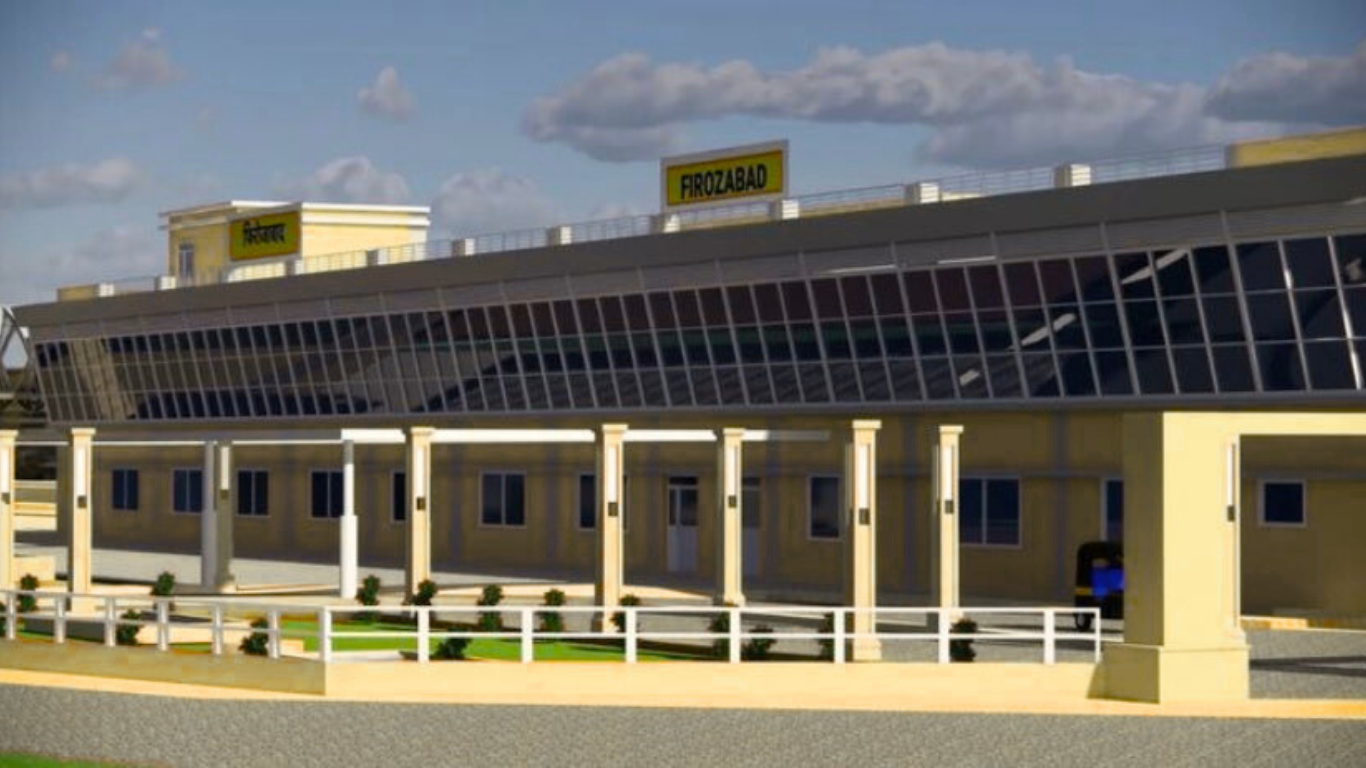
Firozabad, a city located in the western part of Uttar Pradesh, is famously known as the “City of Glass.” This city has carved a niche for itself on the map of India for its unmatched glass and bangle industries. But there’s much more to Firozabad than just its booming factories. The city reflects a mix of historical significance, rich cultural traditions, and a rapidly developing urban lifestyle.
Firozabad sits just about 40 km from Agra, the city of the Taj Mahal, and is part of the Agra division. Despite being overshadowed by Agra in terms of global recognition, Firozabad holds its own unique charm and value. From its dusty lanes echoing the clinks of glass to its political shifts and age-old temples, the city presents a real and raw experience of North Indian life.
In this detailed article, we will walk you through every major aspect of Firozabad — its past, present, and the path it’s walking toward the future.
History of Firozabad: A Glimpse into the Past
The roots of Firozabad stretch back to the Mughal era. It is believed that the city got its name from Firoz Shah, a noble during Emperor Akbar’s rule. Some local accounts say the region was once known as Chandwar and was renamed Firozabad after the destruction of the old city and the establishment of a new township.
The area has seen battles, invasions, and moments of glory. During British colonial rule, Firozabad served as a significant point due to its strategic location on the Delhi-Kanpur railway line. Post-independence, the city slowly began building its identity beyond just a trading point.
One cannot ignore the contribution of Firozabad during the Indian freedom struggle. Local revolutionaries and ordinary citizens alike played a role in the nationwide movement against British rule.
In modern times, while retaining its old-world charm, Firozabad has expanded its wings in manufacturing, education, and trade. Its growth as a commercial city has not been at the cost of its cultural heritage, which is still visible in its temples, shrines, and age-old customs.
Geography and Climate of Firozabad
Firozabad lies in the western plains of Uttar Pradesh and is surrounded by Agra to the west and Etah to the north. The Yamuna River, flowing nearby, contributes to the fertility of the region. The city’s geographical coordinates are roughly 27.15° N latitude and 78.39° E longitude, placing it in a region known for extreme weather conditions.
Summers here are intensely hot, often touching the 45°C mark during peak May-June months. Monsoons bring moderate rain between July and September, while winters, especially December and January, are chilly and pleasant, with temperatures dipping as low as 5°C at night.
The terrain is largely flat, suitable for both agriculture and urban development. While the city has grown quickly, it still houses many rural outskirts where farming continues to be a way of life.
Environmental concerns are rising in Firozabad due to the pollution caused by glass factories. Several initiatives have been introduced in recent years to reduce carbon emissions and improve air quality, although implementation remains a work in progress.
Economy of Firozabad: The Heartbeat of the Glass Industry
If there is one word that defines Firozabad economically, it is glass. The city is one of the largest producers of glass bangles in the country. Almost every household in the region is somehow connected to the glass or bangle industry, either through family businesses or labor.
The manufacturing units here produce everything from traditional bangles to decorative glassware, perfume bottles, lamps, and chandeliers. A large part of this production is exported, which brings significant foreign exchange to the local economy.
Small-scale industries and workshops dominate the economic landscape. These are often family-run setups that have passed down skills over generations. Besides glass, Firozabad is also developing its leather, agriculture, and retail sectors.
However, the city faces challenges like outdated machinery, lack of industrial zoning, and pollution. Despite these obstacles, the resilience of Firozabad’s people has kept the economy vibrant.
Recent years have seen efforts from the government and private players to modernize the industry. Initiatives like switching to cleaner fuels, training programs, and export facilitation centers are slowly changing the face of the traditional bangle town.
Demographics and Culture of Firozabad
Firozabad is home to more than 600,000 people as per the last census, with a fairly balanced gender ratio. The population is a mix of Hindus, Muslims, Jains, and a few other communities. The cultural atmosphere is rich and harmonious, despite occasional communal tensions like any other urban Indian setting.
Hindi is the primary language spoken, but Urdu and Braj Bhasha are also commonly heard in homes and local bazaars. The city’s culture is a blend of rural and urban values. Festivals are celebrated with great enthusiasm, with Diwali, Holi, Eid, and Muharram being the most prominent.
Traditional attire still rules the streets. Women can often be seen wearing sarees and salwar suits with heavy glass bangles, while men prefer kurta-pajamas or shirts with trousers. Local cuisine is another cultural highlight — spicy chaat, samosas, jalebis, and seasonal delicacies dominate street corners.
Education levels have improved over the years. Several schools and colleges now serve the growing youth population. However, the literacy rate, especially among women, still needs improvement.
Tourist Attractions in Firozabad
Though not a typical tourist hub like Agra or Varanasi, Firozabad holds some fascinating places for travelers and history buffs:
1. Vaishno Devi Mandir:
A replica of the famous temple in Jammu, this religious site attracts devotees from surrounding districts. It’s particularly lively during Navratri.
2. Sukhdev Nagar Glass Market:
This is a must-visit for anyone interested in local crafts. Here, you can watch artisans create colorful bangles and buy directly from the makers.
3. Tundla:
Though technically a nearby town, Tundla is just 20 km away and has colonial-era buildings and a major railway junction, making it worth a stop.
4. Ramsnehi Ashram and Jain Temples:
Spiritual seekers often visit these peaceful spots for meditation and religious discourses.
5. Jama Masjid:
This historic mosque in the heart of the city is a beautiful example of Mughal-style architecture. It’s not just a place of worship but also a symbol of the city’s past.
While the city lacks mainstream tourist infrastructure, its raw charm and hospitality more than make up for it. A visit to Firozabad feels like stepping into a living museum of industrial India.
Politics and Administration of Firozabad
Firozabad is a politically active district with its own Lok Sabha and Vidhan Sabha constituencies. Over the years, the region has witnessed tight electoral contests and strong grassroots movements.
The city has seen leaders from major parties like the Samajwadi Party (SP), Bahujan Samaj Party (BSP), Bharatiya Janata Party (BJP), and Congress. As of recent years, BJP has been gaining more ground, though local dynamics often shift based on caste equations and development promises.
Law and order are generally stable, though industrial strikes, student protests, or communal flashpoints occasionally emerge. The district administration, led by the District Magistrate, oversees civic affairs, while the Municipal Corporation manages waste disposal, sanitation, and public amenities.
Government schemes like Smart City Mission and PM Awas Yojana have found footing in the city, though execution often faces delays. Locals often express dissatisfaction over poor roads, erratic electricity, and water supply, demanding better governance.
Education and Healthcare in Firozabad
Firozabad’s educational system has seen significant growth. Several intermediate colleges, degree colleges, and polytechnic institutes now serve the city. Notable institutions include Sarojini Naidu Medical College (extension campus), KM Jain College, and many CBSE/ICSE-affiliated schools.
That said, government-run schools often suffer from infrastructure issues and shortage of teachers. More investment in education — particularly for girls — is still needed.
In healthcare, the district has a main government hospital and many private clinics. While basic services are available, for specialized care, residents often travel to Agra or Delhi. Frequent industrial accidents and respiratory issues caused by glass dust are a concern for local doctors and authorities.
Transportation and Connectivity
Firozabad is well connected by rail and road. National Highway 19 passes through the city, making travel to Agra, Kanpur, and Delhi easy. The Firozabad Railway Station is a busy one, served by major express and passenger trains.
Auto-rickshaws and e-rickshaws are the main modes of local transport. Recently, efforts have been made to improve city roads and introduce better traffic management systems.
Agra’s Kheria Airport is the nearest airport, about 45 km away, serving domestic flights. For international travel, Delhi’s IGI Airport is preferred.
Conclusion: Firozabad’s Spirit is Unbreakable
Firozabad may not always make national headlines, but its contributions — especially through the glass industry — are etched deep into India’s economic and cultural landscape. The city reflects the everyday resilience of its people who balance tradition with transition.
Whether it’s the rhythmic clang of bangles, the smell of sweet jalebis in a bustling market, or the stories carried by aged bricks in its old mohallas, Firozabad tells a tale that’s uniquely Indian.
If you’re ever in Uttar Pradesh and want to experience a city that hasn’t lost its roots while chasing progress, Firozabad deserves your time and attention.



